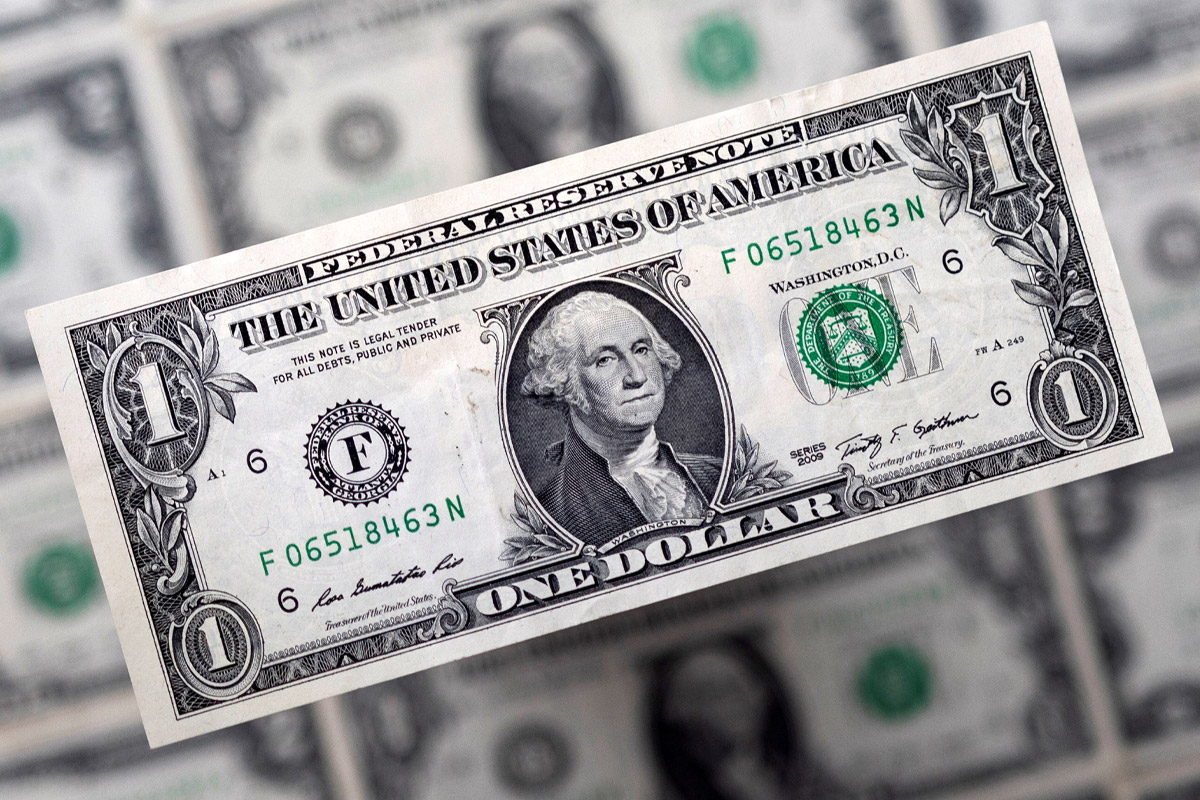The U.S. dollar drifted higher on Wednesday after data showed the services sector in the world’s largest economy rebounded in May after contracting the month before, highlighting uncertainty surrounding the expected start of the Federal Reserve’s easing cycle later this year.
The Institute for Supply Management said its nonmanufacturing purchasing managers index rose to 53.8 last month from 49.4 in April. May’s reading, the highest since August, overshot estimates of a 50.8 reading.
In afternoon trading, the dollar index was up 0.1% at 104.28 <=USD>, after earlier hitting 103.99 on Tuesday, its lowest since April 9.
Even with the strong ISM services data, Vassili Serebriakov, FX strategist at UBS in New York, said he believes the U.S. economy is slowing down, although “it’s not clear that you should outright sell the dollar.”
He said the market is pricing in about two rate cuts by the Fed this year, so not leaving much room to price in more easing than what has already been factored in by investors.
“In that context, we are still not convinced that the dollar has a lot of downside,” Serebriakov said.
The euro, the biggest component of the dollar index, turned lower after the ISM data, trading slightly down at $1.0874 .
Investors are now looking to the European Central Bank meeting on Thursday, in which the bank is widely expected to lower its deposit rate from a record high of 4%.
Earlier in the session, the Bank of Canada (BOC) cut interest rates by 25 basis points (bps) to 4.75%, its first cut in four years. The bank said more easing was likely if inflation continued to moderate.
The U.S. dollar rose against the Canadian currency after the BOC rate move, and was last up 0.1% at C$1.3688 .
Analysts expect the Bank of England to emulate the ECB’s and BOC’s moves when the British central bank convenes in two weeks to decide on interest rates.
The Swiss National Bank, meanwhile, already started easing in March, and could cut rates again this month after Swiss inflation held steady in May.
US PRIVATE PAYROLLS RISE LESS THAN EXPECTED
Earlier on Wednesday, data showed U.S. private payrolls increased less than expected in May while data for the prior month was revised lower.
Private payrolls increased by 152,000 jobs last month after rising by a downwardly revised 188,000 in April, the ADP Employment report showed. Economists polled by Reuters had forecast private employment rising 175,000 last month.
The dollar showed little reaction to the ADP report.
Aside from the ECB, investors are also looking to Friday’s nonfarm payrolls report, with the market expecting 185,000 new jobs created last month, according to a Reuters poll.
“The weak JOLTS (Job Openings and Labor Turnover Survey) data does not pass the threshold of significant slowing in the labor market, which is not going to affect rate expectations,” said Marc Chandler, chief market strategist, at Bannockburn Forex in New York.
Fed funds futures raised the chance of a rate cut in September to 70% on Wednesday, according to LSEG’s rate probability app, compared with 59% late Tuesday. It was slightly below 50% earlier last week.
The rate future market is also pricing between one to two cuts this year.
In other currency pairs, the dollar surged 0.8% against the yen to 156.09 yen. The Japanese currency retraced Tuesday’s gains driven by investors unwinding bets in emerging markets, after Japanese real wages fell for a 25th straight month in April as inflation outpaces nominal pay rises.
On Tuesday, Bank of Japan Deputy Governor Ryozo Himino said the central bank must be “vigilant” about the impact of yen weakness on the economy and inflation. Investors see the BOJ tightening its policy in the future, though not enough to strengthen the yen.
Emerging markets stabilised after a turbulent few days.
The Mexican peso gained against the dollar, which fell 1.6% to 17.567 pesos. The ruling left-wing Morena party was re-elected and, in coalition, within reach of two-thirds majorities in both Congress chambers.
India’s rupee recovered from a seven-week low against the dollar. Election results in India showed voters had returned Narendra Modi to power by a much slimmer margin than expected. The dollar was last down 0.2% versus the rupee at 83.370.







